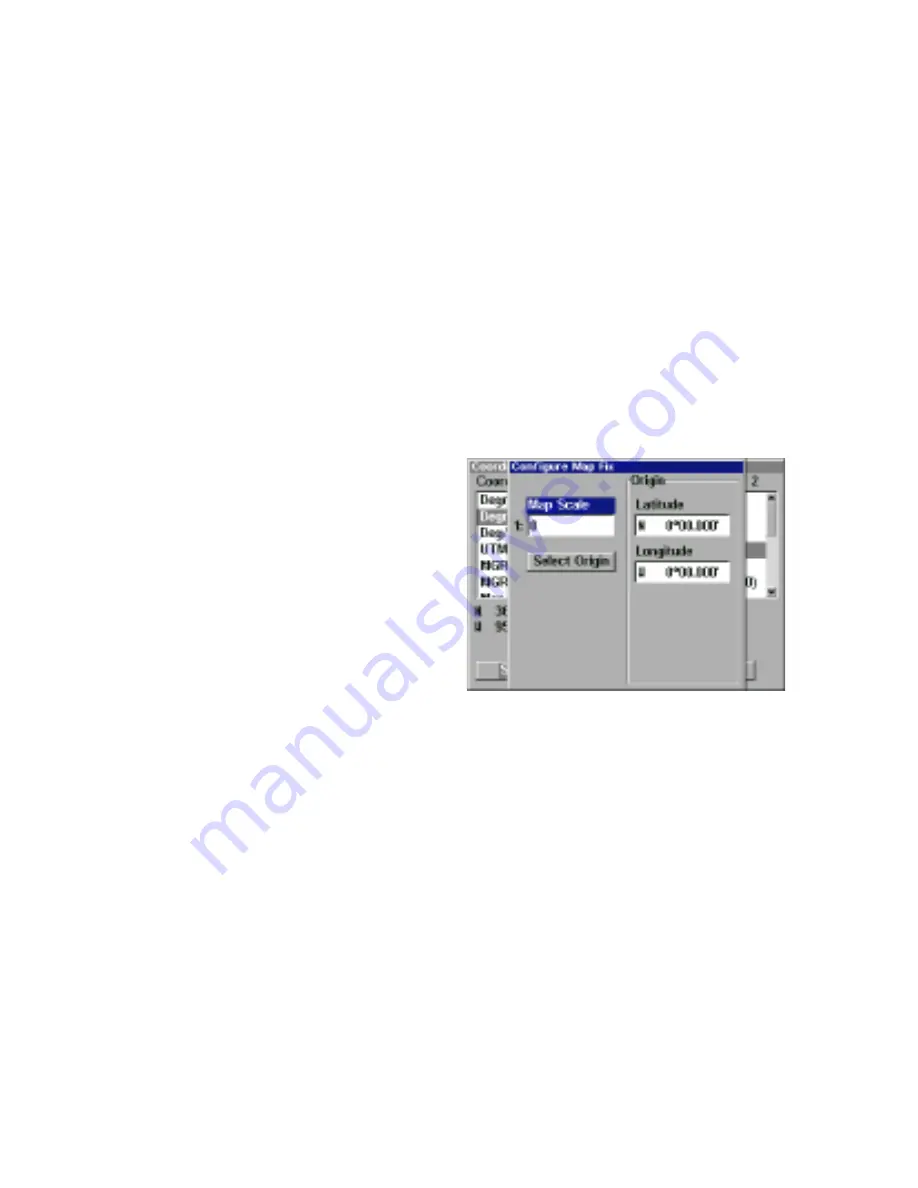
56
measure up four inches and to the left a half-inch from the reference point
on the map to find your location.
To use this format, you need to follow these steps in order. First, take your
map of the area and determine a reference latitude/longitude. (Note: in
order for this system to work, the latitude/longitude lines must be parallel
with the edge of the map. USGS maps are parallel, others may not be.
Also, this works better with smaller scale maps.) The reference position
can be anywhere on the map, but the closer it is to your location, the
smaller the numbers will be that you’ll have to deal with.
Once you’ve decided on a reference position, you can save it as a waypoint.
See the waypoint section for information on saving a waypoint. Save the
reference position as a waypoint. Exit from the waypoint screens.
Now select “Configure Map Fix”
from the “Coordinate System”
menu. The screen at right ap-
pears. “Map Scale” is highlighted.
Press the right arrow key. Enter
the map’s scale. This is generally
at the bottom of the paper map.
It’s shown as a ratio, for example
1:24000. The unit returns to the
Configure Map Fix screen. Now
select “Select Origin Waypoint” if
you saved the reference point as
a waypoint or highlight the Lati-
tude or Longitude under the “Origin” and enter the reference position. If
you used “Select Origin Waypoint”, then select the waypoint that you saved
the reference point under. The unit returns to the Configure Map Fix menu.
Finally, press the EXIT key to erase this menu. Now select "Map Fix” from
the list and press the ENT key. All position information now shows as a
distance from the reference point you chose.
Datum
Maps and charts are based on a survey of the area that’s covered by the
map or chart. These surveys are called “Datums”. Maps that are created
using different datums will show the same latitude/longitude in slightly
different locations.
All datums are named. The GPS system is based on the WGS-84 datum,
which covers the entire world. Other datums may also cover the entire














































